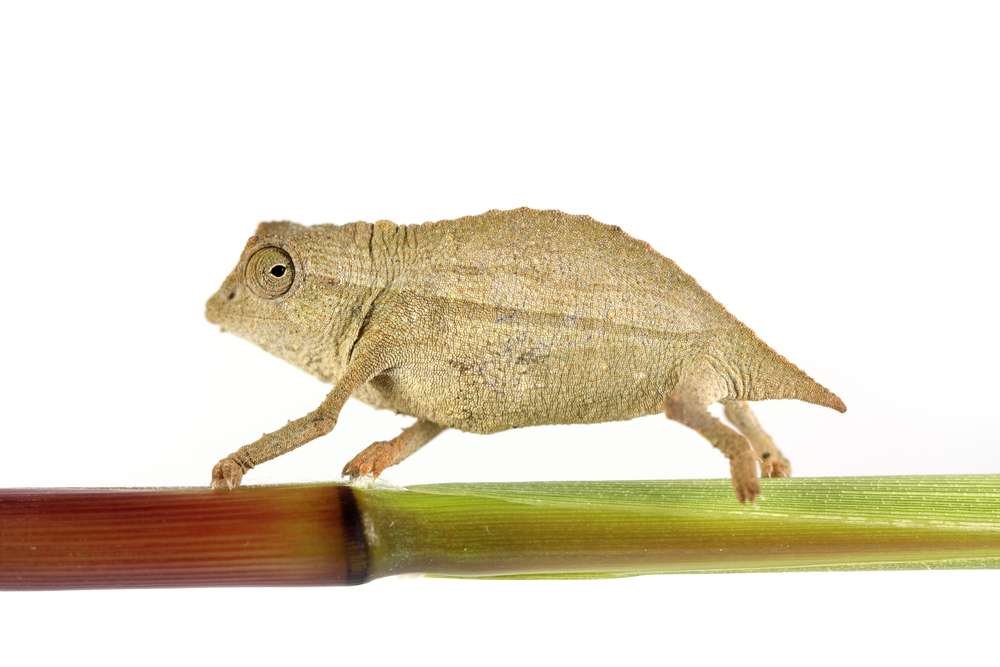Nchisi Pygmy Chameleon
( South African stumptail chameleon )
- Rhampholeon nchisiensis
- IUCN Status: Least Concern
- Threat: harmless
- Venom/Toxin: none
- Trend: decreasing

- Phylum: Chordata
- Class: Reptilia
- Order: Squamata
- Suborder: Iguania
- Family: Chamaeleonidae
- Genus: Rhampholeon
Share:
General Information
The Nchisi pygmy chameleon is named after the Nchisi mountains in Malawi were it was first categorized. It can be found mostly in Malawi, Zambia and Tanzania.
Fun Facts!
The Nchisi pygmy Chameleons can move each eye independently. A common misconception is that Chameleons change colour to blend in with their environment when infact they do so to mirror their stress levels. Different patterns represent different health and stress levels.
Description
The Nchisi pygmy chameleon is a very small chameleon. It has a small head and a very large and round shaped body. It’s base color ranges from light brown to dark brown with light patches.
- Length: up to 10 cm
Ecology and Behaviour
The Nchisi pygmy chameleon will normally make hissing noises when it feels threatened and it can spit out saliva as a way t deter predators.
Diet
The Nchisi pygmy chameleon is a carnivore that eats a variety of invertebrates, although large individuals may take geckos and other chameleons. The species is itself commonly preyed on by snakes such as the boomslang and the twig snake.
Reproduction
The Nchisi pygmy chameleon is oviparous meaning it lays eggs, with little or no other embryonic development within the mother. The adult female flap-necked chameleon lays 10-40 eggs in a hole dug in soil. The eggs take 10–12 months to hatch.
Conservation
It is categorized by the International Union for Conservation of Nature (IUCN) as a, ” Least Concern “.
Distribution and Habitat
The Nchisi pygmy chameleon can usually be found on high altitude plains and forests. In Malawi it can be found above 1500 m elevation on the Nchisi mountains and in, Southern Tanzania above 1800 m elevation and finally in Eastern province Zambia.
Interaction with humans
Culturally, the chameleon is one of Zambian’s most feared and misunderstood reptiles. They are considered to be bad omens, especially if you see one crossing the road. They are also locally thought to be poisonous and if you are bitten by one you will then turn into different colours (They are not poisonous, nor their spit and you won’t change colours )
No donation to this project yet.
| M | T | W | T | F | S | S |
|---|---|---|---|---|---|---|
| 1 | 2 | 3 | 4 | 5 | 6 | 7 |
| 8 | 9 | 10 | 11 | 12 | 13 | 14 |
| 15 | 16 | 17 | 18 | 19 | 20 | 21 |
| 22 | 23 | 24 | 25 | 26 | 27 | 28 |
| 29 | 30 | 31 | ||||


